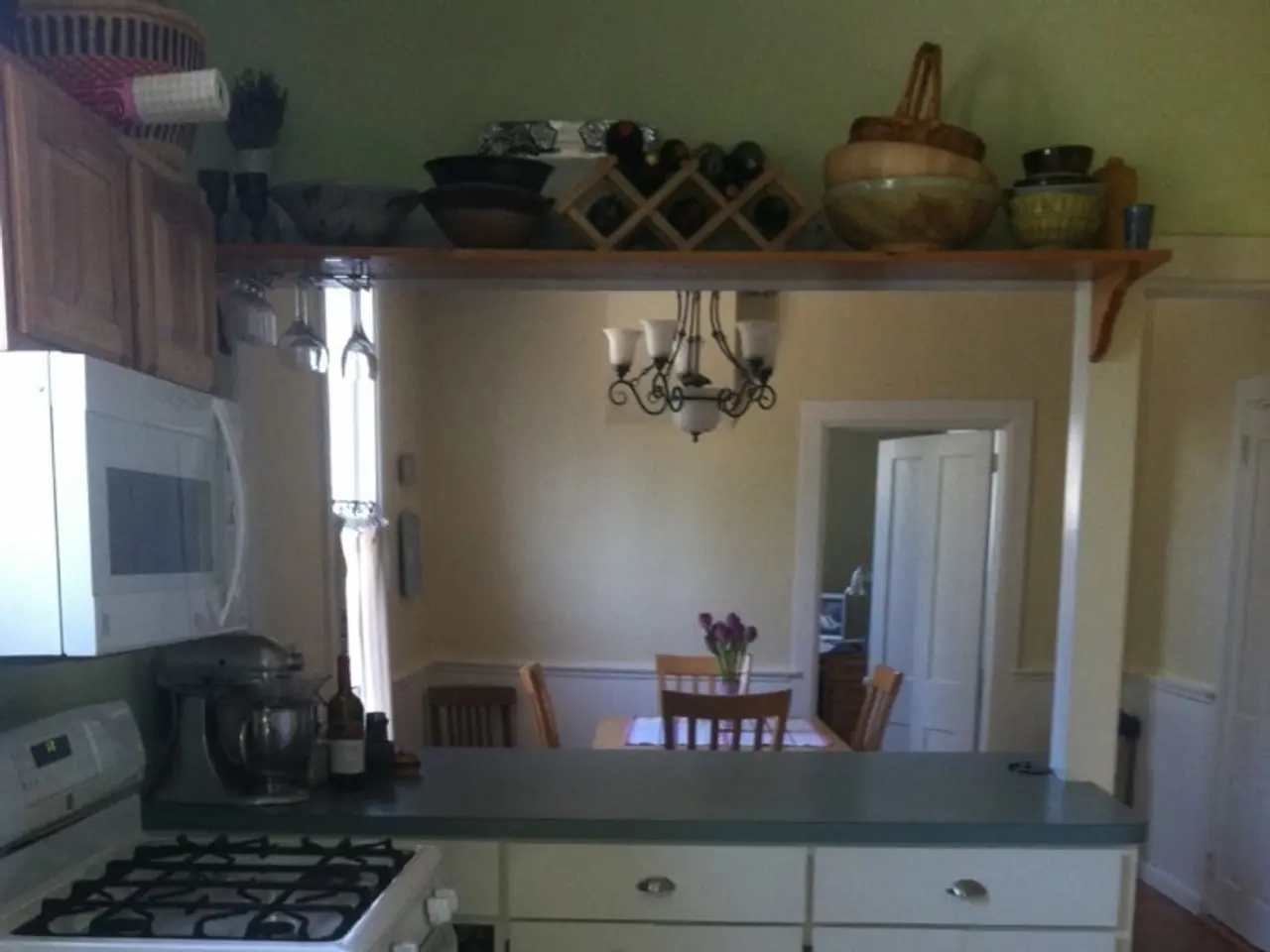Differentiating between a kitchen island and a table: the subtle gap leading to significant change in kitchen ambiance
In the heart of our homes, kitchens have transformed from utilitarian workspaces to multifunctional hubs for cooking, dining, and gathering. This evolution is evident in the transition of cook's tables to the kitchen islands we see today.
Originally, cook's tables were simple work surfaces used for food preparation, as exemplified in early 20th-century kitchens. These sturdy tables, often referred to as baker’s tables or pastry tables, were central spots for kneading dough, chopping, and other prep tasks.
As designers and homeowners sought more versatile workspaces, kitchen islands emerged. These innovations incorporate the utility of cook's tables while adding storage underneath, seating, and integration with appliances. This shift was part of a broader kitchen evolution towards open-concept and social spaces, with islands becoming central for both work and informal dining.
Contemporary kitchen island designs often draw inspiration from antique baker’s tables but adapt them with modern materials, ergonomic heights, and multipurpose functions such as built-in stovetops, sinks, or charging stations. These islands, with their stylish materials like marble or limestone, have become kitchen focal points, visually coordinating with other elements such as countertops and backsplashes.
Practical uses of kitchen islands include additional countertop workspace for cooking and prep, storage solutions, seating areas for casual dining or socializing, and housing appliances or sinks to increase kitchen efficiency. Some contemporary designs even feature integrated ventilation systems or are paired visually with designer range hoods that have evolved into aesthetic statements as much as functional appliances.
In recent years, there has been a revival of interest in Victorian and Edwardian cook's tables. Designers like Rupert Cunningham of Ben Pentreath Studio have incorporated cook's tables into their designs, as seen in this year's WOW!house. The hybrid solution, combining an island and a table, is often more practical in a space-limited kitchen, offering the best of both worlds.
The hybrid solution resembles a freestanding table from a distance, as noted by Rupert Cunningham, but features one side with cupboards going down to the floor for integrated appliances, and the other side is open with a low-lying shelf. This design echoes the cook's table in Rupert Cunningham's Regency-era kitchen design, used as a prep table.
Emma Sims-Hilditch's interpretation of a modern boot room at the WOW!house featured a draper's table, another example of the enduring appeal of these versatile workspaces.
Historically, kitchens were traditionally used for food preparation and storage, with separate areas like sculleries, pantries, and still rooms in large country houses. However, kitchen islands, which are taller and offer more storage and functionality, later replaced cook's tables as the central feature of modern kitchens.
Charlie Smallbone, Graham Clark, and Mark Wilkinson established Smallbone of Devizes in the 1970s, seeking to redefine the kitchen as a sociable living space. They championed the use of farmhouse-style kitchens in the center of the house, a trend that continues today.
For those interested in more articles like this, subscription information for our platform is available. The Victorian cook's table at the National Trust-owned Lanhydrock in Cornwall serves as a source of inspiration for designers, reminding us of the roots of our modern kitchen islands.
Kitchen island designs draw inspiration from antique baker's tables, reflecting a blend of tradition and lifestyle in home-and-garden interior-design, as exemplified by modern interpretations of classic cook's tables in contemporary kitchens. Designers like Rupert Cunningham incorporate these hybrid solutions into their designs, resembling freestanding tables yet offering more functionality and storage with integrated appliances.




